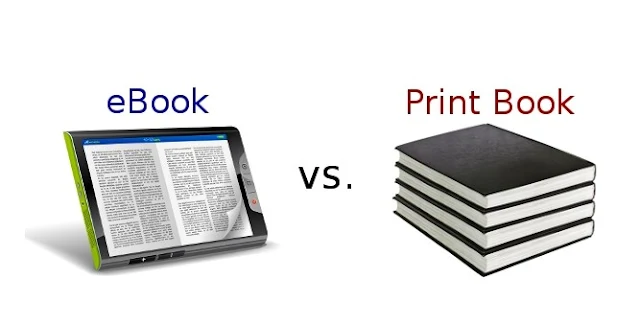Publishing a book is a significant milestone for authors, researchers, and educators. With the evolution of technology, authors today have the option to choose between print publication and eBook (digital) publication. Each format has its own unique features, advantages, and considerations. Below is a detailed comparison between print and eBook publication, with insights relevant to academic and professional publishing, especially as offered by EduPub (www.edupub.org).
1. Format and Medium
-
Print Publication
Involves producing a physical copy of the book. The content is typeset and printed on paper using traditional or digital printing methods. Print books are distributed as hard copies through bookstores, libraries, and academic institutions. -
eBook Publication
The content is formatted into a digital file (such as PDF, ePub, or MOBI) and is meant to be read on electronic devices like computers, tablets, smartphones, or e-readers (e.g., Kindle). It is usually distributed online.
2. Cost of Publication
-
Print
Involves higher costs due to printing, binding, warehousing, and shipping. Authors may bear the cost of minimum print runs or use Print-on-Demand (POD) options, which are still relatively costlier than digital formats. -
eBook
More economical to produce as it avoids physical materials and logistics. Platforms like EduPub offer affordable eBook publication plans for scholars, especially from developing countries.
3. Distribution and Reach
-
Print
Limited by geographical boundaries and logistics. It requires physical delivery and availability at bookstores or libraries. -
eBook
Global distribution is instantaneous. eBooks published with EduPub are made accessible via its website and partner digital libraries, making it easy for international readers to access the work immediately.
4. Accessibility and Portability
-
Print
Requires physical handling. Not as convenient for on-the-go reading. Accessibility is restricted to those who own or borrow the physical copy. -
eBook
Highly portable and accessible. A single device can store thousands of eBooks. Ideal for readers who prefer digital libraries and mobility.
5. Environmental Impact
-
Print
Consumes paper, ink, and other materials. May contribute to deforestation and waste unless sustainably printed. -
eBook
Eco-friendly as it eliminates paper usage. Offers a green publishing solution, which aligns with EduPub's commitment to sustainable development goals (SDGs).
6. Interactivity and Multimedia
-
Print
Static format. No room for hyperlinks, multimedia, or interactive content. -
eBook
Can include clickable hyperlinks, embedded videos, audio clips, and interactive graphs. Ideal for textbooks, research handbooks, and academic reference materials.
7. Updating and Editing
-
Print
Difficult to update once published. Requires a reprint or new edition for corrections or revisions. -
eBook
Easy to revise and update. EduPub allows authors to submit updated editions or corrections without the need for a full re-publication.
8. Authorship and Copyright
-
Both print and eBooks allow authors to retain copyright.
EduPub ensures that whether authors publish in print or digital format, their intellectual property rights are protected under standard licensing terms.
9. ISBN and DOI Allocation
-
Print
Receives a unique ISBN. Useful for academic citation and library indexing. -
eBook
Receives a separate ISBN or eISBN. With EduPub, DOIs (Digital Object Identifiers) can also be assigned, especially useful for academic visibility and citation.
10. Market and Audience
-
Print
Still preferred by traditional readers, libraries, and academic institutions for archiving. -
eBook
Increasingly popular among younger audiences, researchers, and institutions that prefer digital repositories and online learning.
Conclusion
Both print and eBook publication offer distinct advantages depending on the author’s objectives, target audience, and budget. While print books provide a tangible and traditional reading experience, eBooks offer a flexible, cost-effective, and eco-friendly approach to publishing.
At EduPub (www.edupub.org), we offer comprehensive solutions for both print and digital book publication. Whether you are a scholar looking to publish your thesis as an eBook or an educator compiling a printed textbook, EduPub provides end-to-end support, including ISBN allocation, DOI assignment, design, layout, and global distribution.
📬 For Publication Queries or Submission
📧 Email: editor@edupub.org
🌐 Website: www.edupub.org








